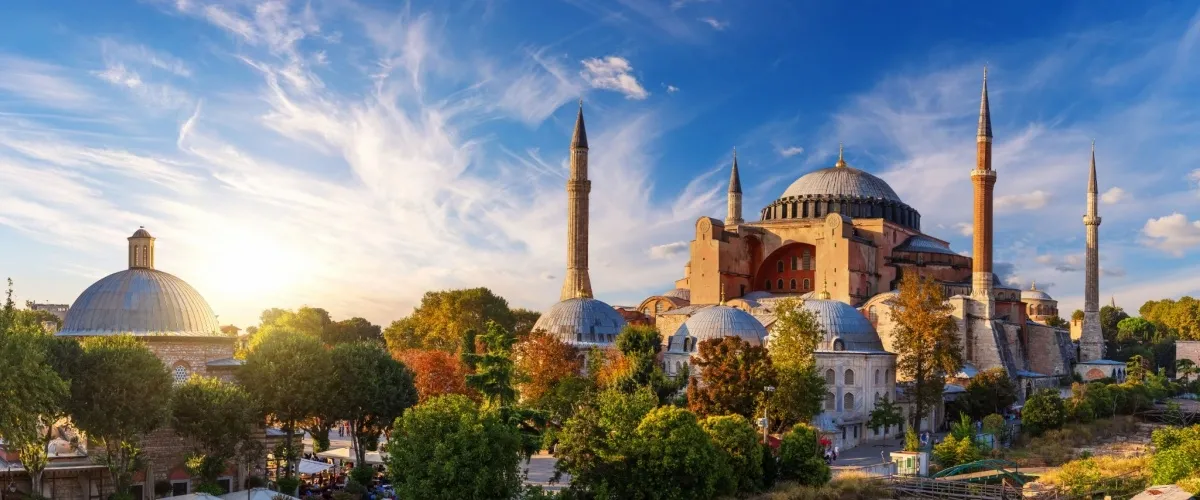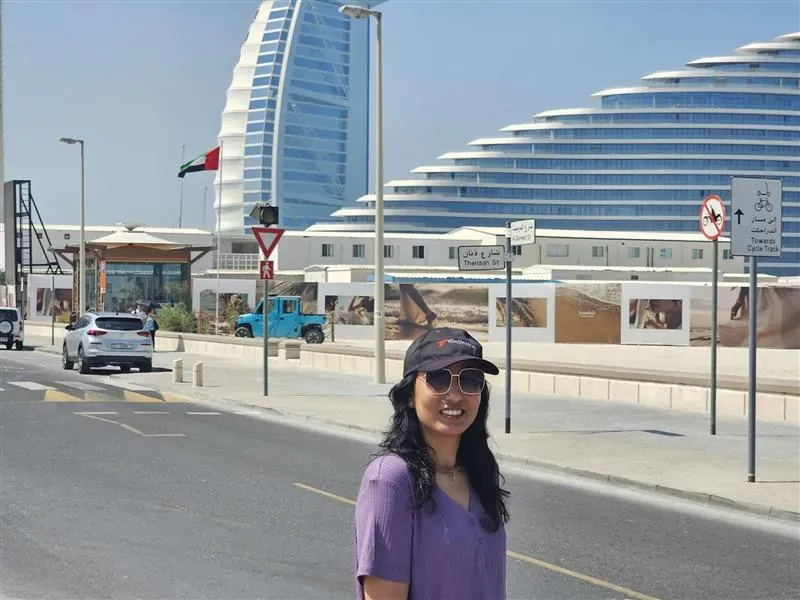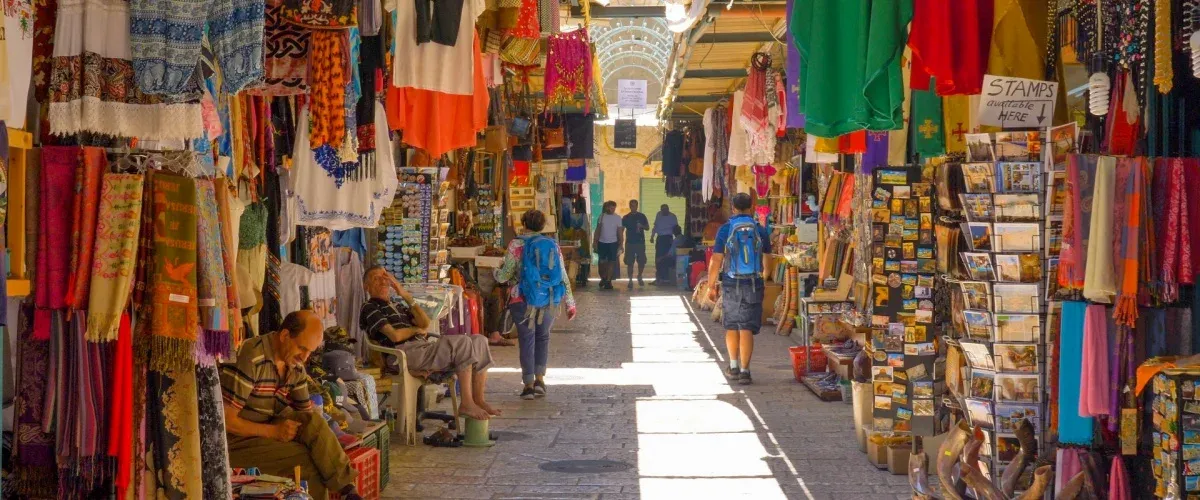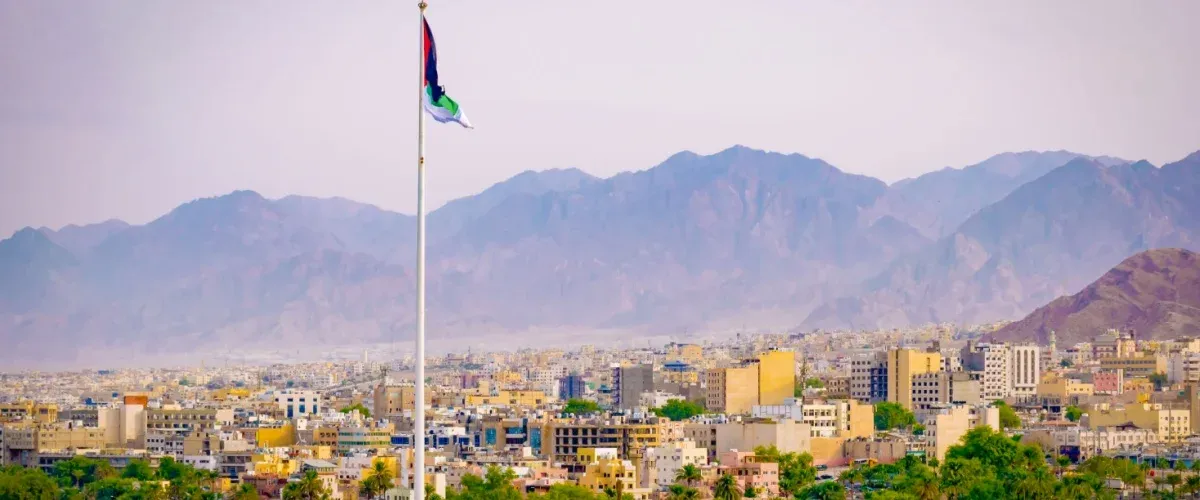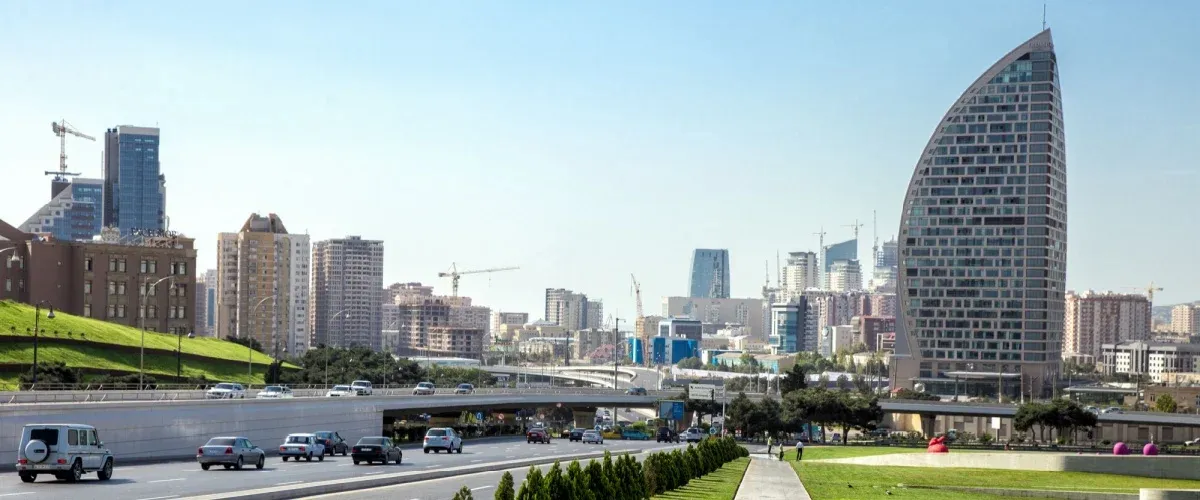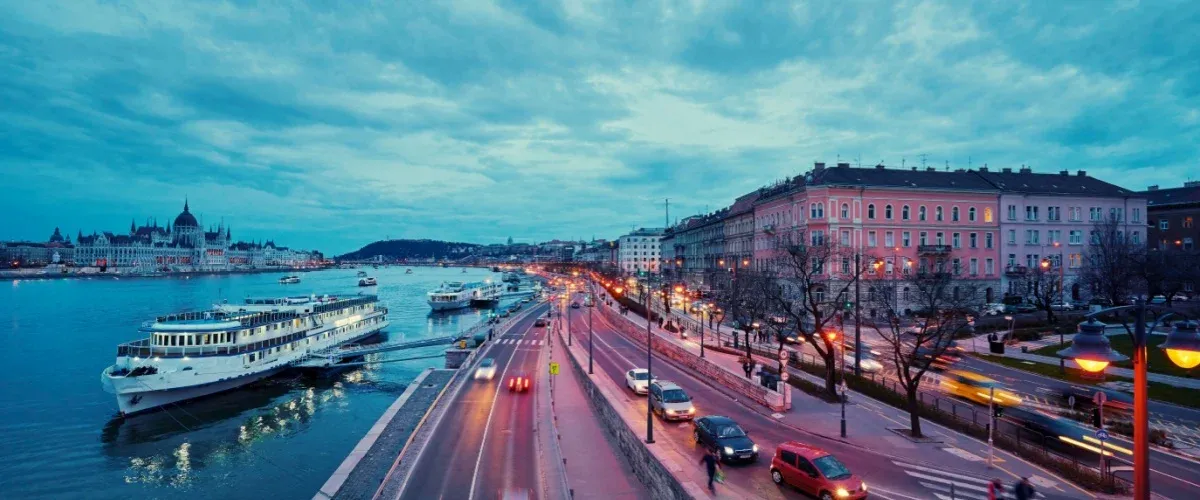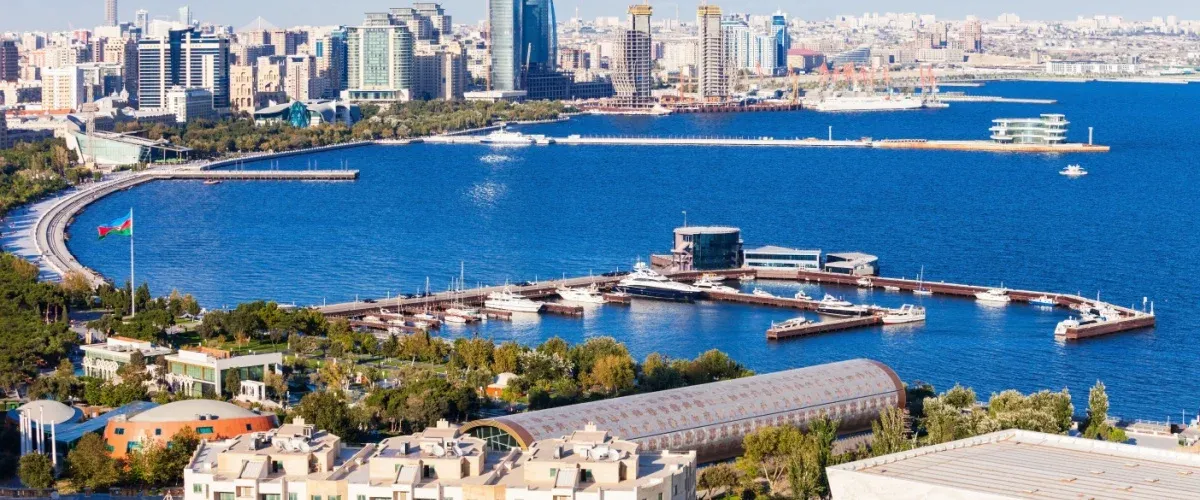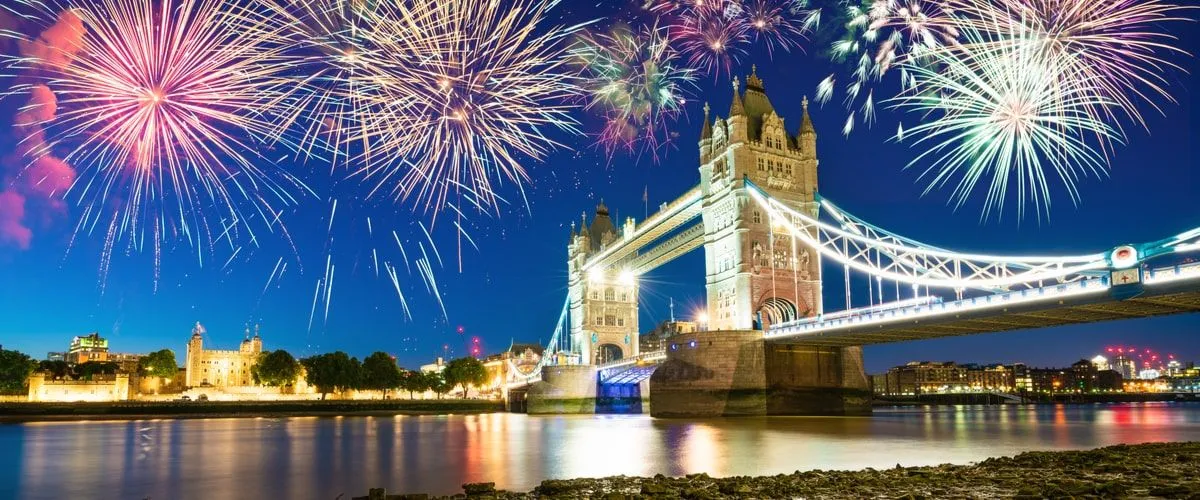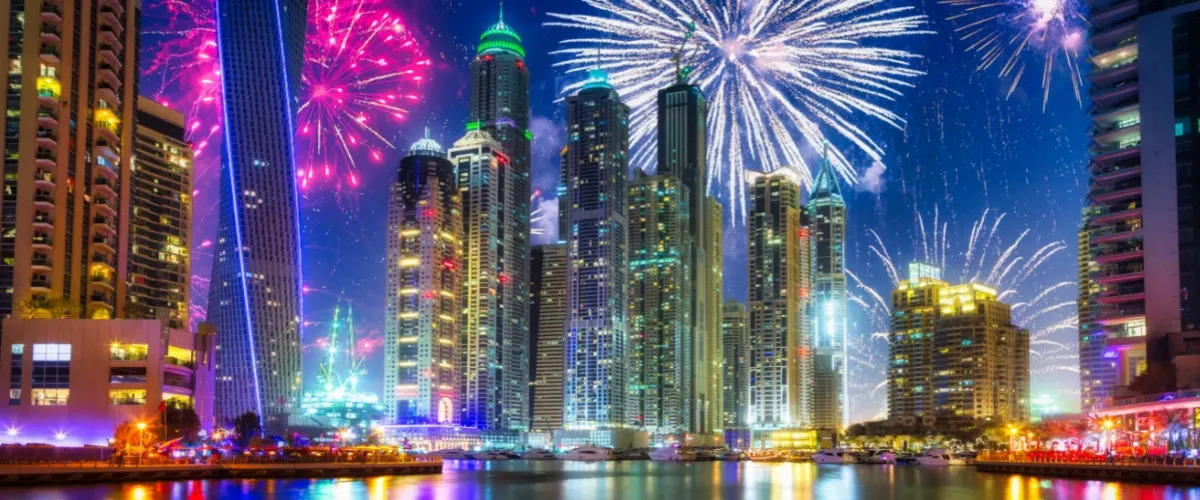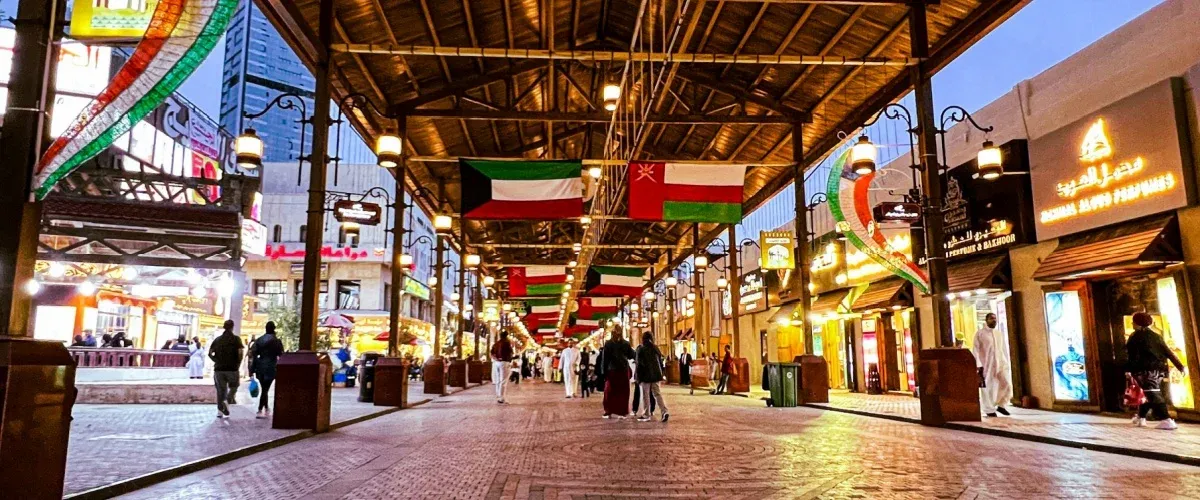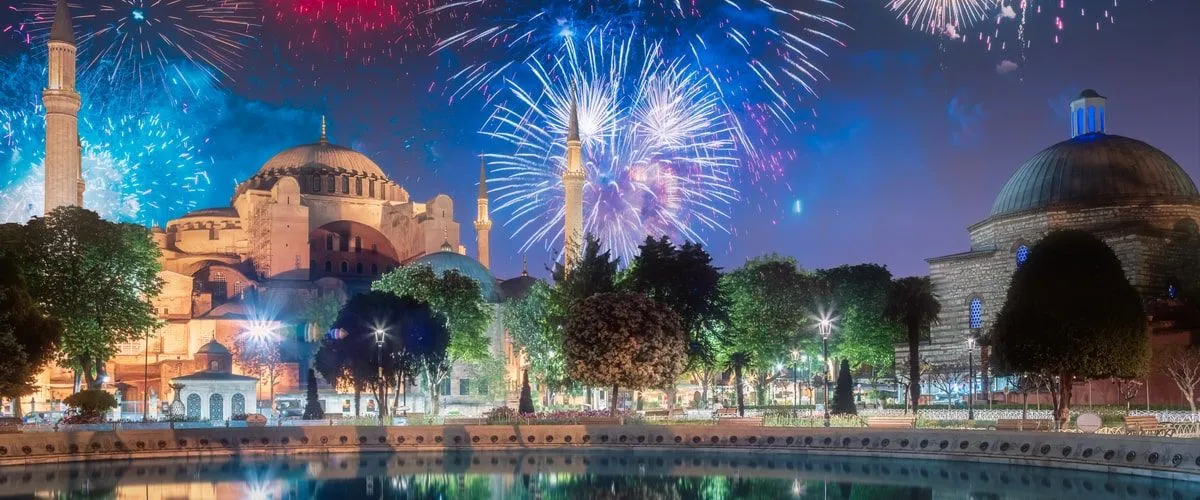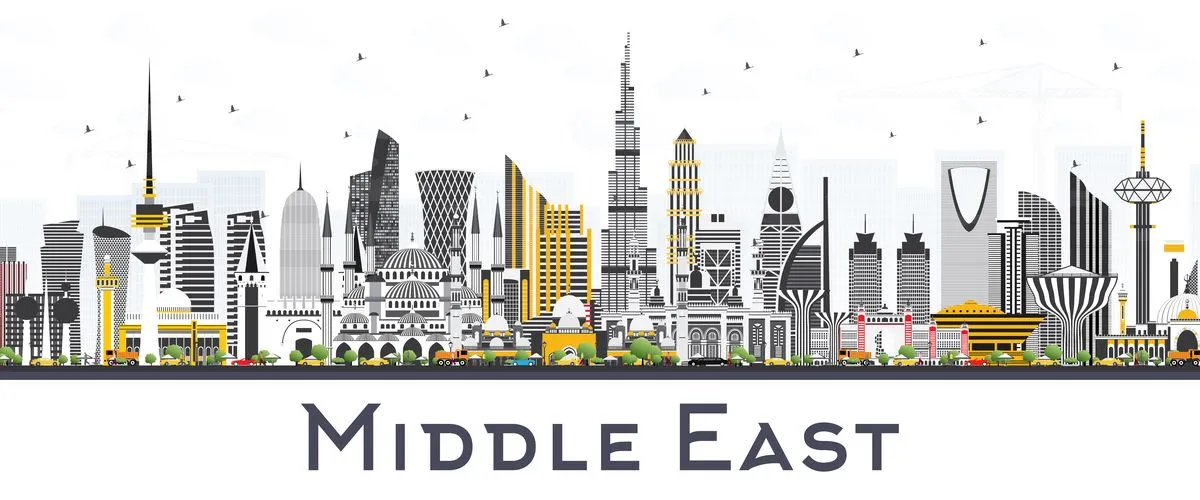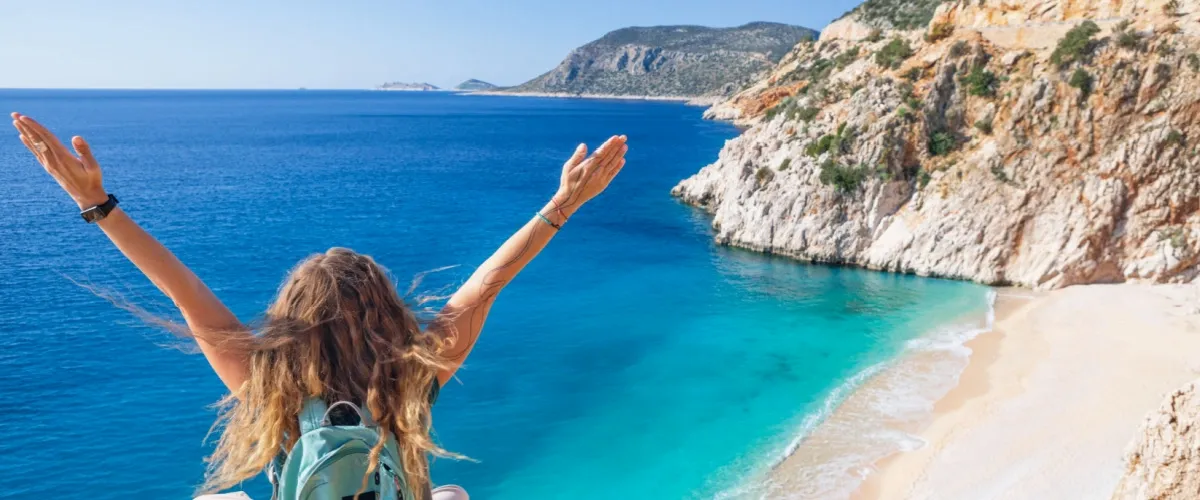Hagia Sophia offers a rich tapestry of history, architecture, and culture, making it a must-visit landmark in Istanbul. If you are into history especially the Byzantine roots, Ottoman transformations, or its status as a modern mosque, Hagia Sophia continues to be your focus of interest. Here are a few things that you will get to know through this Hagia Sophia travel guide to explore the artistic and historical significance of Hagia Sophia.
Hagia Sofia History: A Brief Introduction of the Mosque (Past & Present)
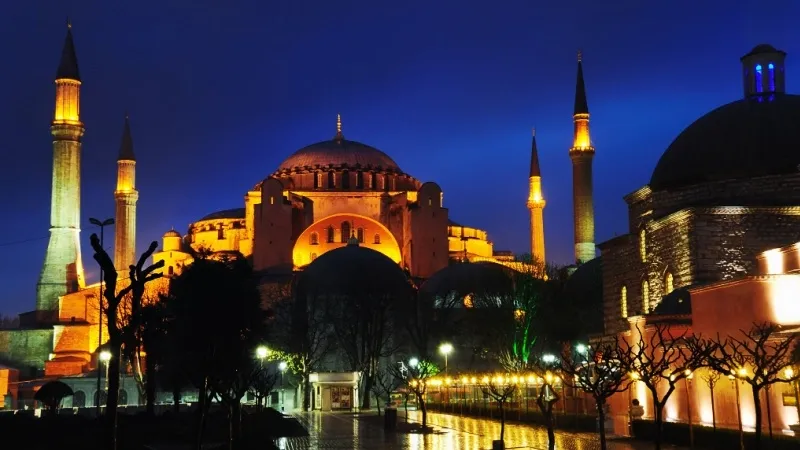
As a famous icon of Istanbul, Hagia Sophia is an architectural marvel and distinguished structure that draws attention as an extraordinary piece from different centuries and cultures. In this comprehensive Hagia Sophia travel guide, you will get to know about this gem constructed as a cathedral. With a history that has seen the building used as a cathedral for Byzantine Christians, an architectural marvel and house of worship for Ottomans, and a mosque once again for the Muslims, it is a symbol of the history of Istanbul. When taking a guided tour Hagia Sophia, visitors add the opportunity to admire the art in which both Christian and Islamic elements are blended. Here's the history of the famous Hagia Sofia:
Hagia Sofia, The Great Church (537 AD to 1453)
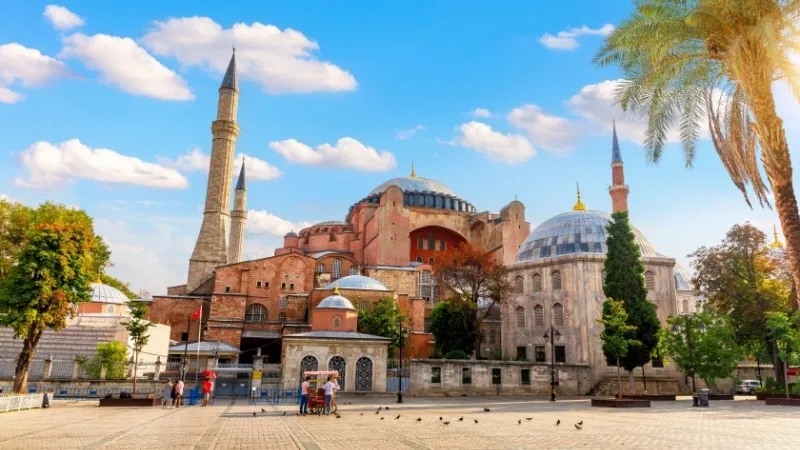
Hagia Sophia Istanbul, located in the heart of Turkey, is an architectural and historical marvel that has captivated visitors for centuries. The mosque was not always a mosque but when it was built, it was a church, The Church of the Holy Wisdom. It was dedicated to Christ and thus was known as Aya Sofya. Initially built by Constantine I in 325 CE on the site of a pagan temple Constantius II had declared the original wooden construction sacred by consecrating it in 306 CE. During the riots in 404 CE, this construction was burned down and then constructed even larger by Constans I and inaugurated by Theodosius II in 415 CE. Although it was again burned down to ashes during the Nika Revolt in 532 CE. Then, Byzantine Emperor Justinian I constructed the cathedral in 537 AD and since then has got glory of being the testament to the architectural ingenuity and artistic achievement of the Byzantine Empire. Two genius architects were behind this marvelous construction in the heart of Istanbul. Although an earthquake damaged most of the cathedral, the structure you see today is the same. Before getting changed into a mosque, Hagia Sofia served as a church for more than 1000 years and the glimpse of old church that peeps through the mosaics make it one of the best places to visit in Turkey to dig deep in history.
Hagia Sofia, the Mosque (1453- 1935)
.jpg)
- The Conquest and Conversion:
Sultan Murad II, however, reclaimed the city, gave it a new name – Istanbul and sanctioned the looting of the church. After the fall of Constantinople, Mehmed II changed this church into a mosque and included a few features that would make it appear more Islamic such as the wooden minaret, chandelier, panel containing a mihrab and minbar, and other Islamic markers including calligraphy. He prayed in the mosque during the Friday ceremony in June of 1453 and thus has become the first imperial mosque and today one of the best places to visit in Istanbul.
- Preservation of Mosaics:
While some layers of mosaic were plastered over, many were preserved beneath layers of paint and plaster. It is observed that they have unconsciously preserved the mosaics and other things for generations to come.
Hagia Sofia, The Museum (1935-2020)
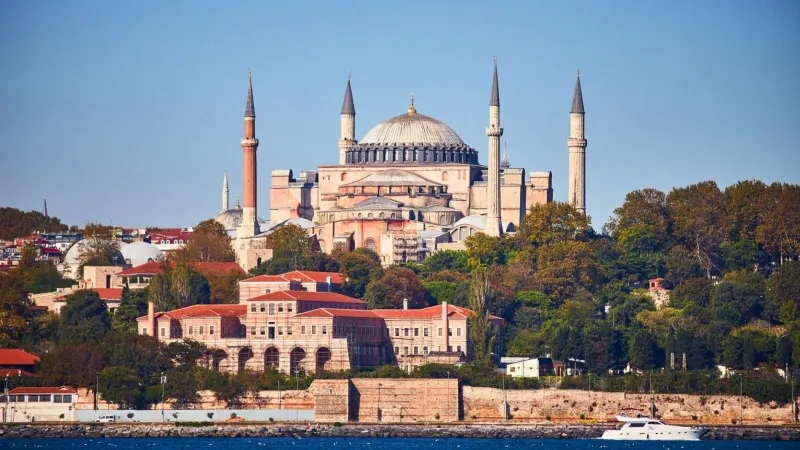
- Secularization & Restoration:
Hagia Sophia was used as an architectural example in the Renaissance period; In 1935, Mustafa Kemal Atatürk converted Hagia Sophia into one of the best museums in Turkey. This was a part of his progressive policies to make Turkey what he wanted it to be by modernizing it and making it secular with many restoration projects. Through this hagia Sophia guide, you will be able to witness all those efforts that were made to reveal the Byzantine mosaics and other artistic features along with the Islamic calligraphic decorations.
Hagia Sophia, The Modern Mosque (2020-Present)
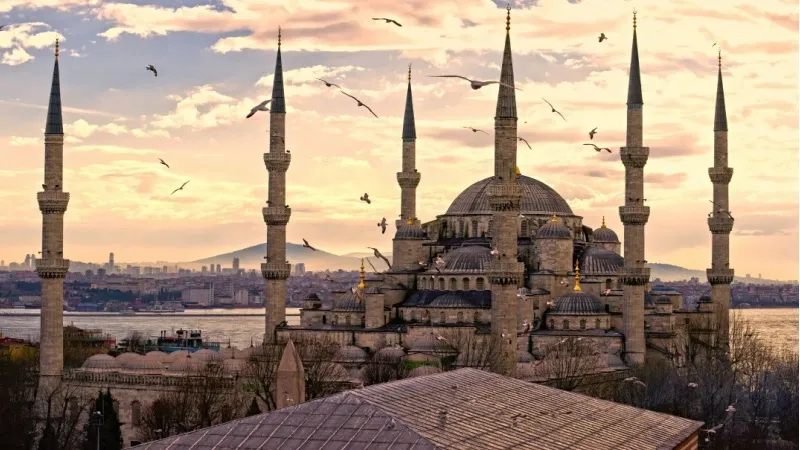
- Reconversion:
Hagia Sophia was converted again into a mosque in July 2020 following a measure of the head of state. While it serves the purpose of a mosque for prayers still the structure and its embellishments can be viewed by tourists and people from all over the world to know its history and importance.
Book our Turkey tour packages now
What is Inside the Hagia Sophia Mosque
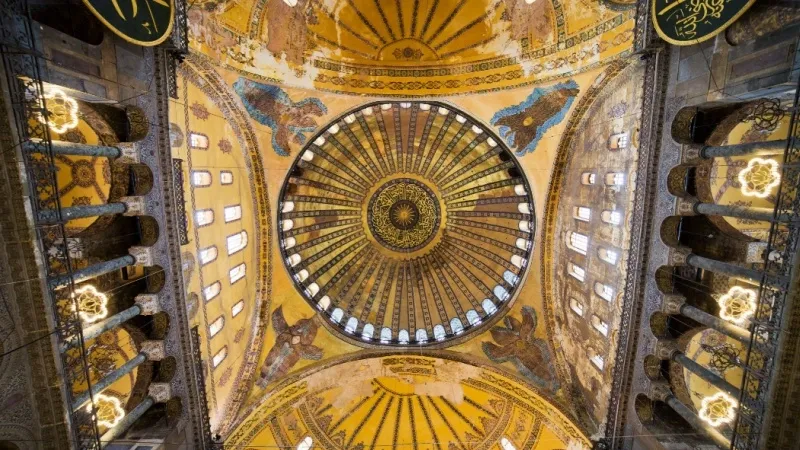
As Istanbul is a city of contrasts and harmony, Hagia Sophia is also a symbol of architectural brilliance and religious fusion. The Turkey travel guides cannot be completed without adding Hagia Sophia to their list of places in Istanbul. Witnessing the blend of ancient history and modern vibrancy amidst its bustling streets and lively bazaars is among the most favorite activities in Istanbul. Here is a glimpse of the Interior of Hagia Sophia Istanbul.
The Great Dome

- Architectural Marvel: The structure consists of a dome, built with a base diameter of about 31 meters and a height of about 55 meters. It seems to be suspended in mid-air due to the pendentive system adopted in the dome's design. This lends a sense of the interior vastness, the extraordinary spaciousness.
- Symbolism: The dome represented the celestial sphere and was an integral part of the Byzantine architectural vision.
Deesis Mosaic
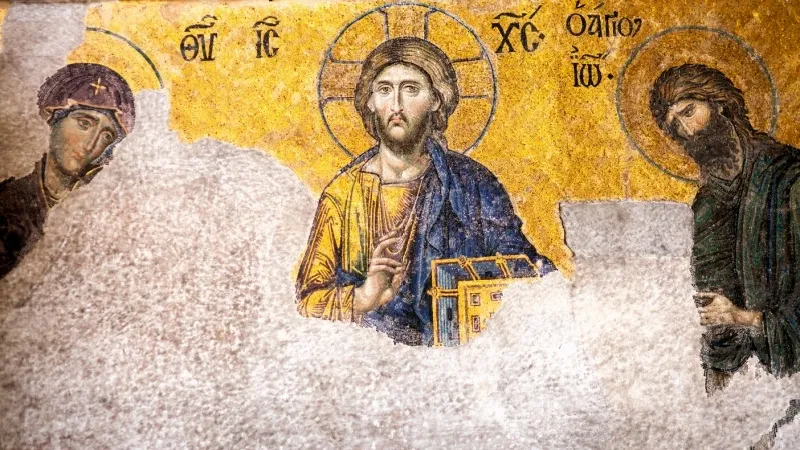
- Description: This mosaic, dating back to the 13th century, depicts Christ Pantocrator surrounded by the Virgin Mary and John the Baptist, appealing for humanity's salvation.
- Artistic Significance: The Deesis is renowned for its expressive quality and intricate detail, highlighting the advanced mosaic techniques of the Byzantine era.
Wishing Column
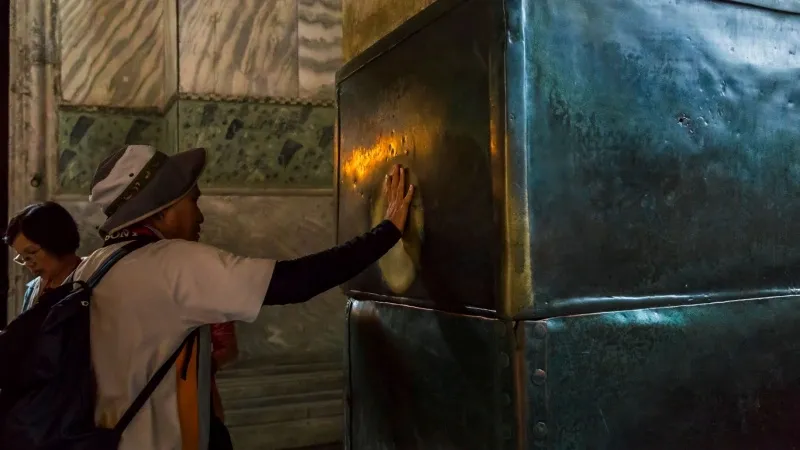
- Legend: The column has a hole and is used to treat illnesses. The feature of the column is that it has a hole on one side and is believed to cure diseases when passed through. The rings inside the building’s metal exterior allow people to put their thumb in it and spin it for a wish.
- Historical Anecdote: Also, called the Sweating column, according to local belief, it sweats, and the sweat is medicinal in nature.
Mihrab
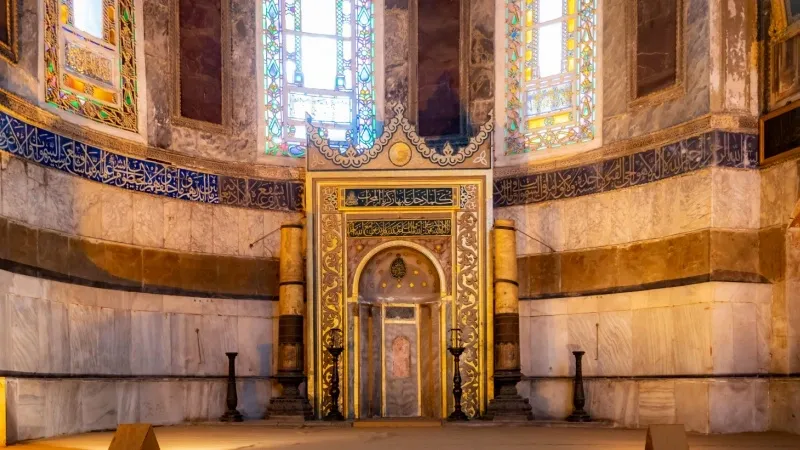
- Function: The word ‘mihrab’ means a semicircular structure in the wall of the mosque that shows the direction of the Ka’bah in Mecca. It is the direction that Muslims turn to during prayer.
- Location: Hagia Sophia’s mihrab is where the altar used to be placed. It symbolizes the building’s conversion from a church to a mosque.
Minbar

- Description: It is a platform situated in the mosque used by the imam in providing welfare speeches during Friday prayers.
- Significance: It signifies the power and the significance of assembling for prayers in the religion of Islam.
Imperial Gate
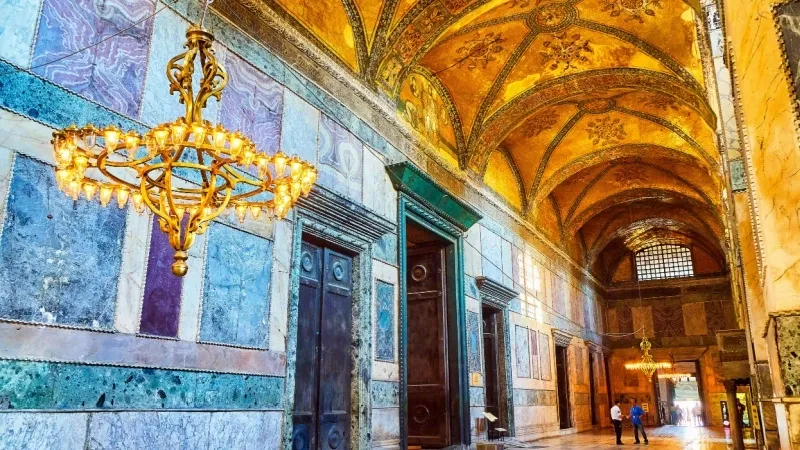
- Historical Use: The largest entrance in Hagia Sophia, used exclusively by the Byzantine emperors.
- Decoration: The gate has detailed artwork in the mosaic, some of which depicts Emperor Leo V1 kneeling to Chris.
Secret Mosaic

- Discovery: Hidden mosaics have been uncovered over time, revealing the building's rich Christian heritage.
- Preservation: These mosaics are important for understanding the artistic and religious history of Hagia Sophia.
Serpentine Gallery
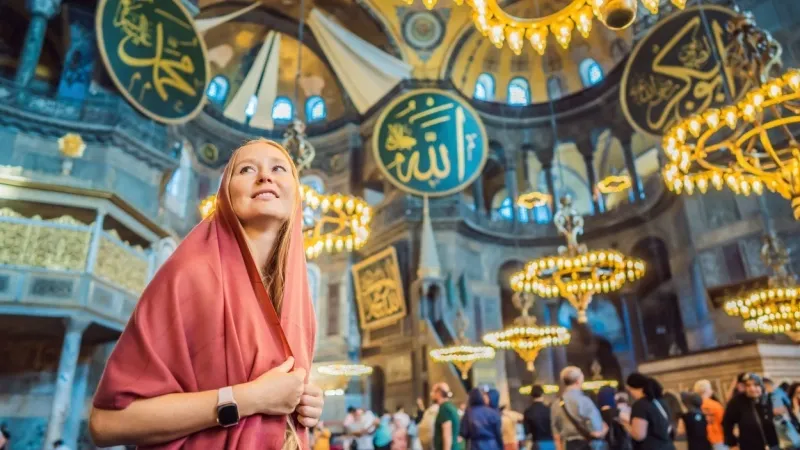
- Feature: Interior balcony; that is an upper floor that basically offers a vantage of the inside the building.
- Function: Used historically for important guests and ceremonies, it offers a panoramic view of the nave.
Ottoman Tombs
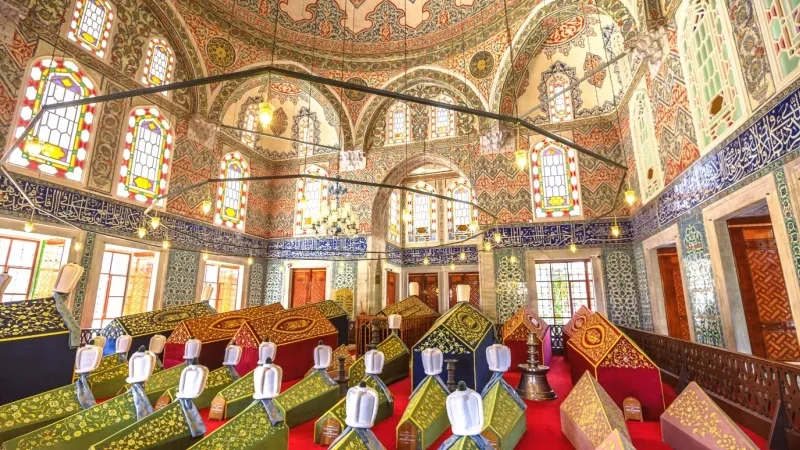
- Sultans Buried: The Ottoman dynasty buried Selim II and Murad III, their wives, and other relatives near the Hagia Sophia Museum along with their tombs.
- Architectural Style: The tombs are ostentatiously classical in their architectural style with the perfect finish on the interior and exterior ornamentation.
Omphalion
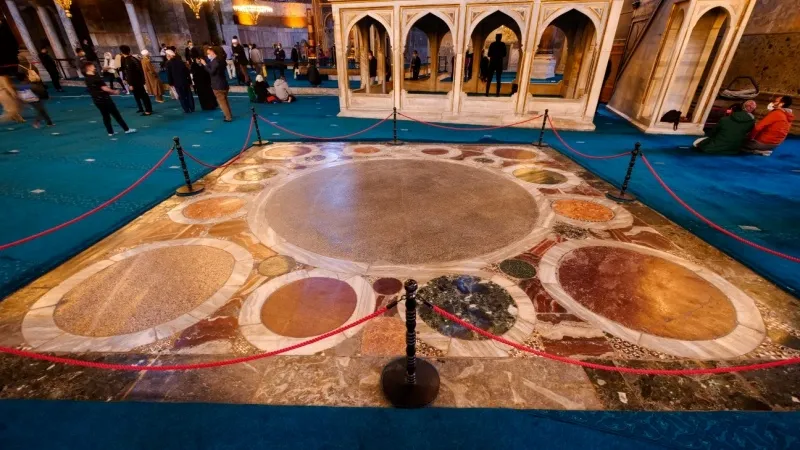
- Description: A wide columned peripheral structure with a large circular marble floor area for the Byzantine emperor’s coronation ceremonies.
- Symbolic Significance: It was at this place that the center of the empire was located, and it served as a focus in the coronation occasions.
Mosaic of Virgin Mary
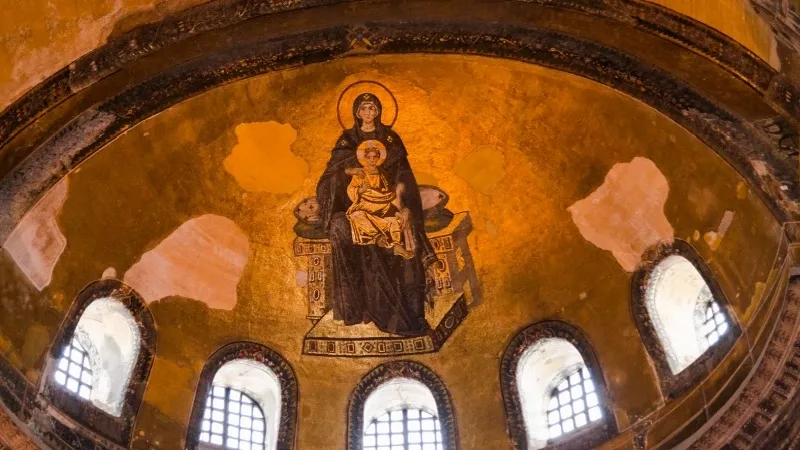
- Location: In the apse, this mosaic depicts the Virgin Mary holding the Christ Child.
- Historical Context: It signifies the importance of Mary in Byzantine worship and iconography.
Emperor Justinian and Constantine
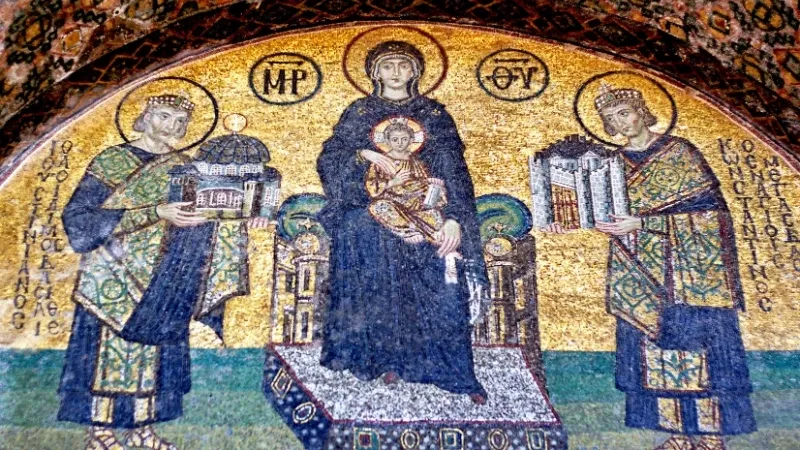
- Depiction: It shows the emperor Justinian I offering a small model of Hagia Sophia to the Virgin Mary, and the emperor Constantine who offers a small model of Constantinople.
- Symbolism: It stresses the attitude of imperial family and the interdependence of church and state.
The Monolithic Columns

- Construction: These are large thick columns that are carved from a single piece of stone and bear witness to the architectural and engineering merits of the constructors.
- Materials: They are undoubtedly made of precious stones- green marble from Thessaly and porphyry from Egypt.
Mosaic of Jesus
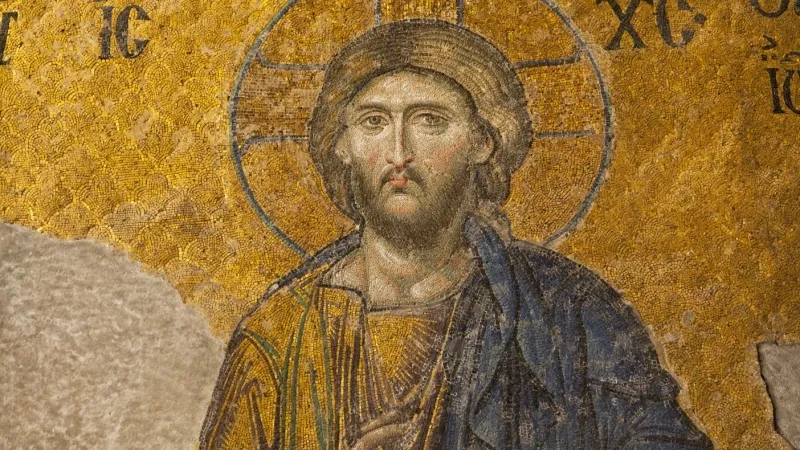
- Imagery: Various mosaics throughout Hagia Sophia depict Jesus Christ, often in the role of Pantocrator which means the All-Powerful one.
- Artistic Detail: These mosaics are noted for their intricate tesserae and vibrant colors.
Mosaic of the Virgin and Child in the Apse
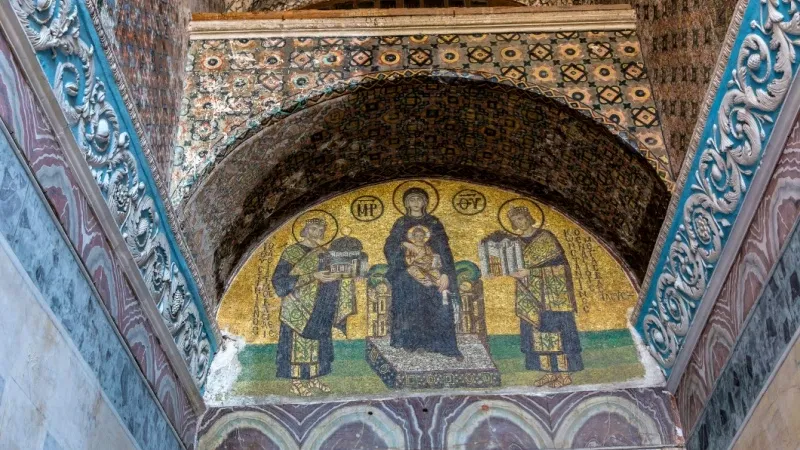
- Significance: This mosaic is in the apse of one of the churches in Ravenna. This mosaic depicts the Virgin Mary holding baby Jesus, an image common in early Christian art. The scenes on the arch of the apse include the anointment of the head with her, dove and the eagle, this is one of the mosaic paintings on the church in Ravenna.
- Historical Relevance: It represents the restoration of icon veneration after the end of the Byzantine Iconoclasm.
Mosaic of Constantine and Empress Zoe
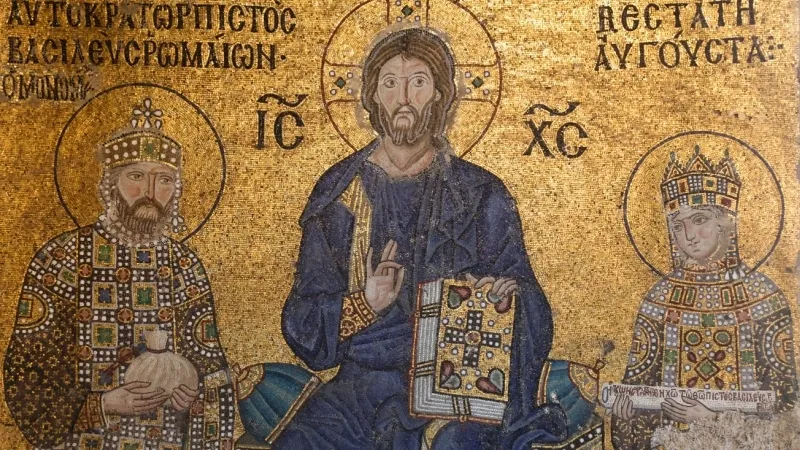
- Imagery: Based on the Byzantine art, the picture work depicts the Emperor Constantine IX Monomachos and Zoe the Empress bringing gifts to Christ.
- Cultural Significance: It demonstrates the tradition of imperial influence and the emperor’s responsibility for church affairs.
A Comprehensive Travel Guide to the Istanbul’s Icon
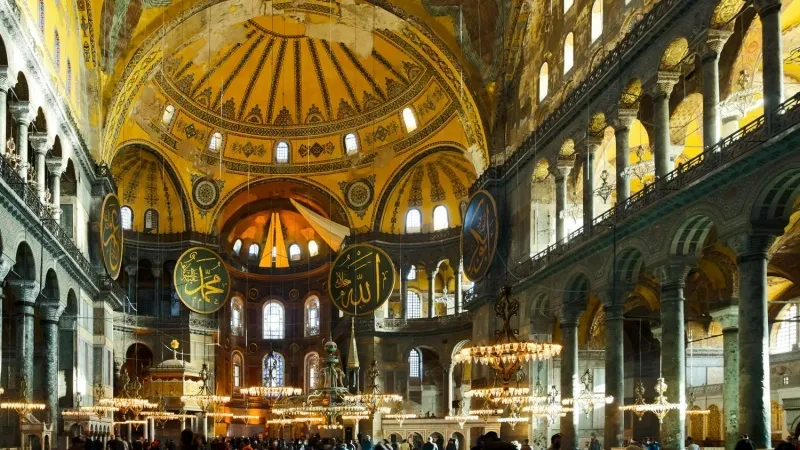
Interesting Facts About Hagia Sophia
- Size and Scale: Hagia Sophia's dome is 31 meters in diameter and sits 55 meters above the floor
- Historical Usage: It has functioned as a church for 916 years, a mosque for 481 years, and a museum for 85 years
- Artistic Wealth: The structure includes over 30 million gold tesserae (mosaic tiles)
- Cultural Blend: Hagia Sophia is a unique blend of Christian and Islamic art and architecture
- UNESCO Status: Because of it’s location in the Historic areas of Istanbul, it is among the Turkey UNESCO World Heritage Sites since 1985
- The name Hagia Sophia is the only name of the mosque with translations in different languages like Ayasofya in Turkish, Sancta Sophia in Latin, and Holy Wisdom or Divine Wisdom in English
Travel Tips for Visiting Hagia Sophia

Best Time to Visit Hagia Sophia
- Early morning or late afternoon to avoid crowds
- Fridays can be busy due to Jumu'ah (Friday prayer)
Dress Code for Hagia Sophia:
- All visitors must wear modest clothing. Women should bring a scarf
Hagia Sophia Entry Ticket Purchase
- Purchase tickets online to avoid long lines
- Consider a combination ticket for nearby attractions
Hagia Sophia Guided Tours
- Opt for guided tours for deeper insights into Hagia Sophia’s history and architecture
Rules & Regulations to Visit Hagia Sophia
- Both men and women should wear modest clothing
- Remove shoes before entering prayer areas
- Maintain respectful silence during prayers and worshippers
- No eating or drinking inside the mosque
- Photography allowed, but without flash
Additional Information About Hagia Sophia
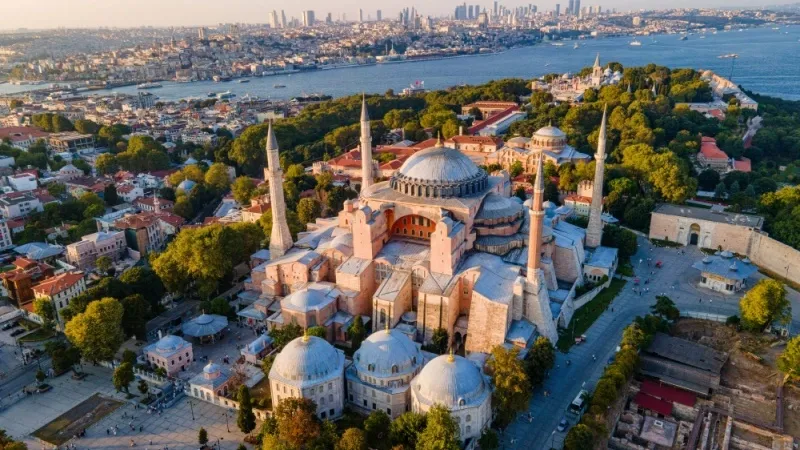
Here are a few things to know when planning for a guided tour to Hagia Sofia Istanbul:
Hagia Sophia Location: Sultanahmet district, Istanbul, Turkey
Hagia Sophia Address: Ayasofya Meydanı, Sultanahmet, Fatih, 34122 Istanbul, Turkey
Other Names: The Great Church, Hagia Sophia, Ayasofya
Construction Year: 537 AD. (Completed)
Hagia Sophia, a UNESCO World Heritage Site Since:1985
Architects of the Mosque: Anthemius of Tralles, Isidore of Miletus
Hagia Sophia Opening Hours: 9:00 AM to 5:00 PM
Ideal Duration to Visit Hagia Sophia: 1 to 2 hours
Best Time to Visit Hagia Sophia: Throughout the year
- Early Morning: Right after opening to avoid crowds
- Late Afternoon: For a quieter experience
- Weekdays: Avoid weekends and public holidays for a more peaceful visit
Hagia Sophia Entry Fee:
- General Admission: Approximately EUR 25 (INR 2,235)
- Children under 12: Free entry
Total Entrances to Hagia Sophia: Nine entrances
Visitors Hagia Sophia See Each Year: Approx. 3 million
Facilities at Hagia Sophia: Wheela chair accessibility (ramps and elevators), Photography (No Flash)
Luggage Room: Closest is Sirkeci Railway Station (not in the premises)
Pram Service for Kids: Allowed but not available (You can bring)
Major Highlights & Attractions in Hagia Sophia: The Great Dome, Deesis Mosaic, Wishing Column, Mihrab, Minbar, Weeping Column, Imperial Gate, Secret Mosaic, Serpentine Gallery, Ottoman Tombs, Omphalion, Mosaic of Virgin Mary, Mosaic of Emperor Justinian and Constantine, Monolithic Columns, Mosaic of Jesus, Mosaic of the Virgin and Child in the Apse, Mosaic of Constantine and Empress Zoe
Nearest Airport from Hagia Sophia: Istanbul Airport (IST) (One of the busiest airports in Turkey)
- Distance: Approximately 40 km from Hagia Sophia
- Travel Time: Around 45 minutes by car
How to Reach Hagia Sophia:
- By Metro: Take the M1 metro line to Aksaray, transfer to T1 tram line to Sultanahmet station
- By Tram: The T1 tram line directly stops at Sultanahmet
- By Taxi: Available throughout Istanbul, a direct and convenient option
- By Bus: Several bus lines serve the Sultanahmet area
Hotels Near Hagia Sophia: Four Seasons Hotel Istanbul at Sultanahmet, Sura Hagia Sophia Hotel, Hotel Amira Istanbul, White House Hotel Istanbul, Boutique Saint Sophia, Hagia Sofia Mansions Istanbul are among the best hotels in Turkey to be booked for Hagia Sofia Tour
Restaurants Near Hagia Sophia: Matbah Ottoman Palace Cuisine, Sultanahmet Fish House, Deraliye Ottoman Palace Cuisine Restaurant, Sofa Cafe & Restaurant, Dubb Indian Restaurant are few of the best restaurants in Turkey that you can find near Hagia Sofia
Shopping Near Hagia Sophia: Grand Bazaar (Kapalıçarşı), Spice Bazaar (Mısır Çarşısı), Arasta Bazaar, Istinye Park Mall, Galleria Ataköy
Nearby Attractions from Hagia Sophia: Topkapi Palace, Blue Mosque (Sultan Ahmed Mosque), Basilica Cistern, Hippodrome of Constantinople, Grand Bazaar, Spice Bazaar, Galata Tower, Dolmabahçe PalaceSüleymaniye Mosque, Chora Church (Kariye Museum)
Hagia Sophia History Museum: Everything You Need to Know
- Opening Hours: 9 am to 7 pm
- Ideal For: History, Art, Architecture, and Culture lovers
- Duration to Visit: 30-60 Minutes
- Best Time to Visit: March-May and September-October
- Online Ticket Booking- Available
- Ticket Includes: Skip the line access and audio guide
Through our Hagia Sophia travel guide, you have experienced a virtual tour of this marvel, rich in history and equally an architectural masterpiece, justifying the architectural grandeur of Istanbul and Turkey. This wonderful mosque, which dominates the skyline of the city with its amazingly gorgeous look and great history, is a symbol of the city's rich past and enduring legacy. When you exit those gorgeous doors, you feel a lot more than the visual feast you were served, but instead, you feel united by the stories that have formed the foundation of this symbol of architectural beauty. While Hagia Sophia is more than merely a place to visit in Istanbul, it is more of a feeling, befitting the unshakeable charm and spirit of Turkey. So, if you have the heart of a history lover and cultural explorer, take advantage of our Istanbul tour packages and visit this marvelous gem in person.
Hagia Sophia Travel Guide FAQs
Hagia Sophia is a historic building in Istanbul that has served as a cathedral, mosque, and museum over its long history. It is renowned for its massive dome and rich mosaics, representing a blend of Christian and Islamic architecture.
Hagia Sophia is in the Sultanahmet district of Istanbul, Turkey. Its address is Ayasofya Meydanı, Sultanahmet, Fatih, 34122 Istanbul.
Hagia Sophia is open daily from 9:00 AM to 5:00 PM. Opening hours may vary on religious holidays and during prayer times, so it's best to check ahead.
Yes, there is an entry fee of approximately EUR 25 (INR 2,235) for general admission. Children under 12 can enter for free, but it's advisable to check the latest prices as they can change.
The best times to visit Hagia Sophia are early in the morning, right after opening or late in the afternoon to avoid crowds. Weekdays are generally less crowded than weekends and public holidays.
Major attractions include the Great Dome, Deesis Mosaic, Wishing Column, Mihrab, Minbar, Imperial Gate, and various Byzantine mosaics like those of the Virgin Mary, Jesus, and Emperor Justinian.
You can reach Hagia Sophia from Istanbul Airport by taking a taxi, which takes around 45 minutes, or by using public transportation such as the metro and tram lines.
Yes, guided tours are available and highly recommended to fully appreciate the historical and architectural significance of Hagia Sophia. These tours provide detailed insights into its history and features.
Yes, photography is allowed inside Hagia Sophia, but using flash is not allowed to preserve the mosaics and artworks. Be respectful and avoid disturbing worshippers during prayer times.
Visitors should dress modestly. Women are required to cover their heads, shoulders, and legs. Men should avoid wearing shorts, and everyone should remove their shoes before entering carpeted prayer areas.
Nearby attractions include the Blue Mosque, Topkapi Palace, Basilica Cistern, Hippodrome of Constantinople, Grand Bazaar, and Spice Bazaar. These sites are within walking distance or a short tram ride away.
Hagia Sophia has made efforts to improve accessibility, but due to its historic nature, some areas might be challenging to access. It's best to check in advance and plan accordingly.
Hagia Sophia has immense historical significance as it was the largest cathedral in the world for nearly a thousand years, a major mosque during the Ottoman Empire, and a museum reflecting the blend of Christian and Islamic heritage.
Yes, there are several hotels near Hagia Sophia, including Four Seasons Hotel Istanbul at Sultanahmet, Sura Hagia Sophia Hotel, and White House Hotel Istanbul. These offer convenient access to the site and other nearby attractions.
Be mindful of prayer times and the mosque's dual function as a place of worship and a tourist attraction. Dress modestly, respect religious practices, and check for any special closures or events before planning your visit.
